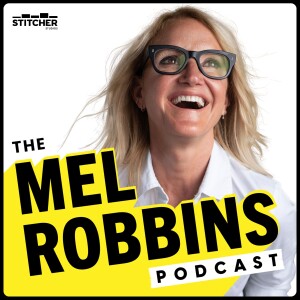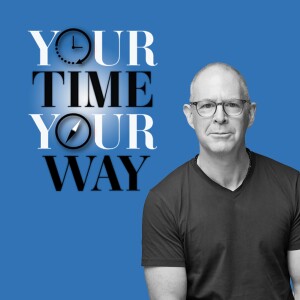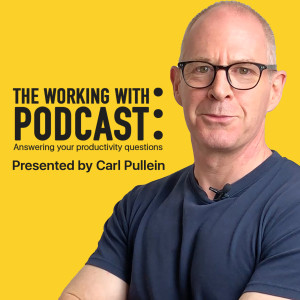
- Podcast Features
-
Monetization
-
Ads Marketplace
Join Ads Marketplace to earn through podcast sponsorships.
-
PodAds
Manage your ads with dynamic ad insertion capability.
-
Apple Podcasts Subscriptions Integration
Monetize with Apple Podcasts Subscriptions via Podbean.
-
Live Streaming
Earn rewards and recurring income from Fan Club membership.
-
Ads Marketplace
- Podbean App
-
Help and Support
-
Help Center
Get the answers and support you need.
-
Podbean Academy
Resources and guides to launch, grow, and monetize podcast.
-
Podbean Blog
Stay updated with the latest podcasting tips and trends.
-
What’s New
Check out our newest and recently released features!
-
Podcasting Smarter
Podcast interviews, best practices, and helpful tips.
-
Help Center
-
Popular Topics
-
How to Start a Podcast
The step-by-step guide to start your own podcast.
-
How to Start a Live Podcast
Create the best live podcast and engage your audience.
-
How to Monetize a Podcast
Tips on making the decision to monetize your podcast.
-
How to Promote Your Podcast
The best ways to get more eyes and ears on your podcast.
-
Podcast Advertising 101
Everything you need to know about podcast advertising.
-
Mobile Podcast Recording Guide
The ultimate guide to recording a podcast on your phone.
-
How to Use Group Recording
Steps to set up and use group recording in the Podbean app.
-
How to Start a Podcast
-
Podcasting
- Podcast Features
-
Monetization
-
Ads Marketplace
Join Ads Marketplace to earn through podcast sponsorships.
-
PodAds
Manage your ads with dynamic ad insertion capability.
-
Apple Podcasts Subscriptions Integration
Monetize with Apple Podcasts Subscriptions via Podbean.
-
Live Streaming
Earn rewards and recurring income from Fan Club membership.
-
Ads Marketplace
- Podbean App
- Advertisers
- Enterprise
- Pricing
-
Resources
-
Help and Support
-
Help Center
Get the answers and support you need.
-
Podbean Academy
Resources and guides to launch, grow, and monetize podcast.
-
Podbean Blog
Stay updated with the latest podcasting tips and trends.
-
What’s New
Check out our newest and recently released features!
-
Podcasting Smarter
Podcast interviews, best practices, and helpful tips.
-
Help Center
-
Popular Topics
-
How to Start a Podcast
The step-by-step guide to start your own podcast.
-
How to Start a Live Podcast
Create the best live podcast and engage your audience.
-
How to Monetize a Podcast
Tips on making the decision to monetize your podcast.
-
How to Promote Your Podcast
The best ways to get more eyes and ears on your podcast.
-
Podcast Advertising 101
Everything you need to know about podcast advertising.
-
Mobile Podcast Recording Guide
The ultimate guide to recording a podcast on your phone.
-
How to Use Group Recording
Steps to set up and use group recording in the Podbean app.
-
How to Start a Podcast
-
Help and Support
- Discover
This week I have a fantastic question about the difference between processing and doing and when to apply the two-minute rule.
Links:
Email Me | Twitter | Facebook | Website
Carl Pullein Coaching Programmes
The FREE Beginners Guide To Todoist
The FREE Beginners Guide To Building Your Own COD System
The Time And Life Mastery Course Version 3
The Working With… Podcast Previous episodes page
Script
Episode 92
Hello and welcome to episode 92 of the Working With Podcast. A podcast created to answer all your questions about productivity, GTD, time management, self-development and goal planning. My name is Carl Pullein and I am your host for this show.
This week I have a fantastic question about processing items in your inboxes. This question perfectly describes a problem I see many people have when it comes to using GTD—or COD—for that matter and that is the speed you process the items you collect throughout the day. The problem though does not end with the items you have collected that day, it also affects how you process your email and collected notes.
Now before we get to this week’s question, I would like to tell you about my new FREE, beginners guide to Todoist course. This course is a simple, onboarding course to help you get started with Todoist. It covers all the basics and allows you to develop a system that will work for you. The course is ideal for anyone you would like to introduce to Todoist and also if you are new to Todoist, then this will get you set up and running in next to no time at all.
Of course, for all you advanced users out there, I have over 200 videos on Todoist over on my YouTube channel, so if this course does not cover what you are looking for, I am sure you will find it on my YouTube channel.
Oh, and don’t forget my summer sale on my coaching programmes. You can save yourself up to $200 by getting yourself into the programme now. Details of what you will receive from the programme are all in the show notes to this podcast.
Okay, on to this week’s question and that means it’s now time for me to hand you over to the mystery podcast voice for this week’s question.
This week’s question comes from Justin. Justin asks: Hi Carl, I’ve watched many of your videos and you often talk about processing your inbox as only taking around 10 to 20 minutes. For me, it takes more than 30 minutes - often an hour - is there anything I am doing wrong?
Hi Justin, thank you very much for your question.
Let’s start with a recap on what processing is. Processing, or organising, is where you sort out everything you have collected into your inboxes and make decisions on them based on what a collected item is, what needs doing with it and where to put it. In theory, this should be relatively quite a simple task, yet I know it causes people so many problems that in the end they resist doing it and things start to build up in inboxes. When that happens you soon stop collecting and that’s a sign your system has failed and you need to reassess your structure and overall system.
Now, there are two inboxes that will need your attention every day - or at least every forty-eight hours. Your to-do list manager’s inbox and your email inbox.
Let's deal with what you collect in your todo list manager’s inbox first.
Here we have some control over what’s in there. When you are collecting notes and to-dos you get to choose where they go—tasks go into your to-do list, ideas and plans to your notes app. Now in the rush to collect something, we may not have defined whether something is a task or a note. That’s okay, but you will need to make that decision at some point. If you have time when you collect the item, make that decision then. That will save you time later.
With email, you have little control over what comes in. That said, I do think you have more control than you probably think. For example, do you really need to subscribe to all those newsletters? Do you really need all your LinkedIn and social media notifications coming to your inbox every day? Maybe you do, maybe you don't. That a choice you can make.
You can also set up rules in most email apps that will filter emails as they come in. You can arrange it so that all newsletters get automatically sent to a specified newsletter folder for example or have emails that have you as a cc’d recipient send to a specific folder—when you are a cc’d recipient it generally means the email is for your reference only. The only thing you will need to with these folders is to make sure you are reading and reviewing them once a week or so. I would set up a recurring task in my to-do list to remind me to do this.
Next up, do not confuse processing with doing. What I see is people going through their inboxes and trying to do the tasks instead of making decisions about them. Now, of course, you may say what about the two-minute rule? I’d say what about it? You see you need to apply the two-minute strategically. If you have an inbox of 100 items and you apply the two-minute rule to just ten of those items, that’s twenty-minutes gone. In those twenty minutes, you could easily have cleared your inbox.
And that the thing here. What are you trying to achieve? Clear the inbox or do the work? The two parts are very different.
The problem I have seen if you combine doing the work and processing you don't do a very good job at either. You don't get as much work done as you would hope and you still have unprocessed items left in your inbox.
It is far better to focus on processing only. Decide what something is and what needs to happen—if anything— next. Once those decisions have been made you can put the item where it needs to go. Using keyboard shortcuts and drag and drop I’ve found to be the fastest way to do this.
Processing is all about speed. The faster you can do it, the sooner you can get down to doing your work. If you spend too much time deciding what something is and what to do about it, then your processing will take far too long. This is why the way you structure your to-do list manager, email and note app is important. If your projects, folders and notebooks are too vague or are very similar in nature you will find you hesitate before making a decision. It will drag down the speed at which you process. When you have clear, well-defined projects and notebooks then you will make your decisions about where something should go much faster.
Of course, if you have plenty of time to do your processing and you do not have many items to process, then you can apply the two-minute rule. I often do this when I process my to-do list inbox at the end of the day. If I have less than ten items in there I will do those tasks that will take less than two minutes. Yesterday, I collected a task to save Fast and Furious 6 to my watch list on Netflix for example. A less than two minute task. I just went over to Netflix, found the film and saved it to my watch list and cleared the task—I’m catching up on the Fast and Furious franchise of films at the moment.
However, if there are a lot of items in my inbox, then the focus is on processing those items. I will just process everything first. I will leave tasks that can be done in two minutes or less in the inbox if I intend to do them in that session of work, but if not, they get processed and organised in their rightful folder. Remember organising and doing are two entirely different things.
Now you may find your notes app inbox does not get that many items in it on a day to day basis. I don’t collect items into Evernote every day, so I don’t process that every day. Anything going into Evernote will not be urgent or time-sensitive for me. They are often things I want to read later, ideas that I want to develop at some time in the future or an article I think will be useful for a book or blog post I am writing. As I don’t send too many items there, I only process it once a week. Usually, I have around twenty to thirty items to process, so I can get those processed and organised in less than twenty minutes.
If you use an app like Drafts, you can collect a lot of your stuff, such as items to a checklist or ideas list directly, and bypass the inbox. That’s a real time saver.
Also, with apps like Evernote you get a unique email address you can use to send items directly to your inbox, you can use this email address for subscribing to newsletters. This then brings the newsletter direct to your Evernote inbox and I can process it from there instead of my email. Again it’s really all about saving time and speeding up the processing time.
Before we finish this episode let me share with you an area of processing I do every morning. It might help to give you an idea of how long your processing should take.
Because I live over in the Far East, while I am asleep, North and South America and Europe are awake. So, when I wake up in the morning I will often have over a hundred emails in my inbox. Now, before I take a shower I boil my egg and to get the water boiling and the egg cooked to my favourite level, it takes 12 minutes. That gives me twelve minutes to process just over one hundred emails. Often I can actually do that in under ten minutes, but on average, because I only allow my egg boiling time to process those emails, I will get it done.
For me, it’s simply just about making a decision about what something is, whether I want to take action on it or read it later. Because those folders are at the top of my email folder list, I just drag and drop them as I go through my inbox. Once finished, I have an empty inbox, a list of actionable emails I have twenty-four hours to respond to—my personal rule: respond to all emails within twenty-four hours—and I’m ready to step into the shower and really start my day.
And that’s the goal to have, process as fast as you can and then get on do the work that matters most to you.
I hope that’s given you some ideas, Justin. Thank you for your excellent question. And thank you to you too for listening.
Don’t forget, if you have a question you would like answering on this show, just send me an email or DM me on Facebook or Twitter and I will be happy to answer your question if I can.
It just remains for me to wish you all a very very productive week.
More Episodes
How Long Should You Be Spending On Planning Each Day?
 2019-09-09
2019-09-09
How To Finally Get Control Of Your Time
 2019-09-02
2019-09-02
Why You Need A Weekly Review - NO EXCUSES!
 2019-08-26
2019-08-26
Managing Projects v Managing Tasks Which is More Important?
 2019-08-19
2019-08-19
How To Simplify Your Productivity System When it Becomes Too Complex.
 2019-08-12
2019-08-12
How To Organise Your University/College life
 2019-08-05
2019-08-05
How To Get control of Your Distractions and Interruptions
 2019-07-29
2019-07-29
Mid Year Goal Planning and Corrections with Kev Blackburn (part 2)
 2019-07-19
2019-07-19
Mid-Year Goal Planning And Correction With Kev Blackburn (Part 1)
 2019-07-15
2019-07-15
How To Manage Multiple Email Accounts
 2019-07-08
2019-07-08
How To Choose The Right Productivity Apps For You.
 2019-07-01
2019-07-01
How to Reduce Your To-do List To a Manageable Level
 2019-06-24
2019-06-24
How To Stay Productive When You Have Young Kids
 2019-06-17
2019-06-17
How To Finally Get Your Productivity System To Stick
 2019-06-10
2019-06-10
How To Set Up A Productivity System And Stick With It
 2019-06-03
2019-06-03
How To Use COD In A Paper Environment
 2019-05-27
2019-05-27
How To Turn Ideas Into Achievable Projects
 2019-05-20
2019-05-20
How to Use Your Calendar Properly
 2019-05-13
2019-05-13
How To Stop Feeling You Have To Do More.
 2019-05-06
2019-05-06
Create your
podcast in
minutes
- Full-featured podcast site
- Unlimited storage and bandwidth
- Comprehensive podcast stats
- Distribute to Apple Podcasts, Spotify, and more
- Make money with your podcast
It is Free
You may also like

Heal, Survive & Thrive!


Disney Family Stories & Gossip


Positive Thinking Mind


The Mel Robbins Podcast


ŒIL pour YEUX, DENT pour MÂCHOIRE 😎


- Privacy Policy
- Cookie Policy
- Terms of Use
- Consent Preferences
- Copyright © 2015-2025 Podbean.com


 iOS
iOS Android
Android